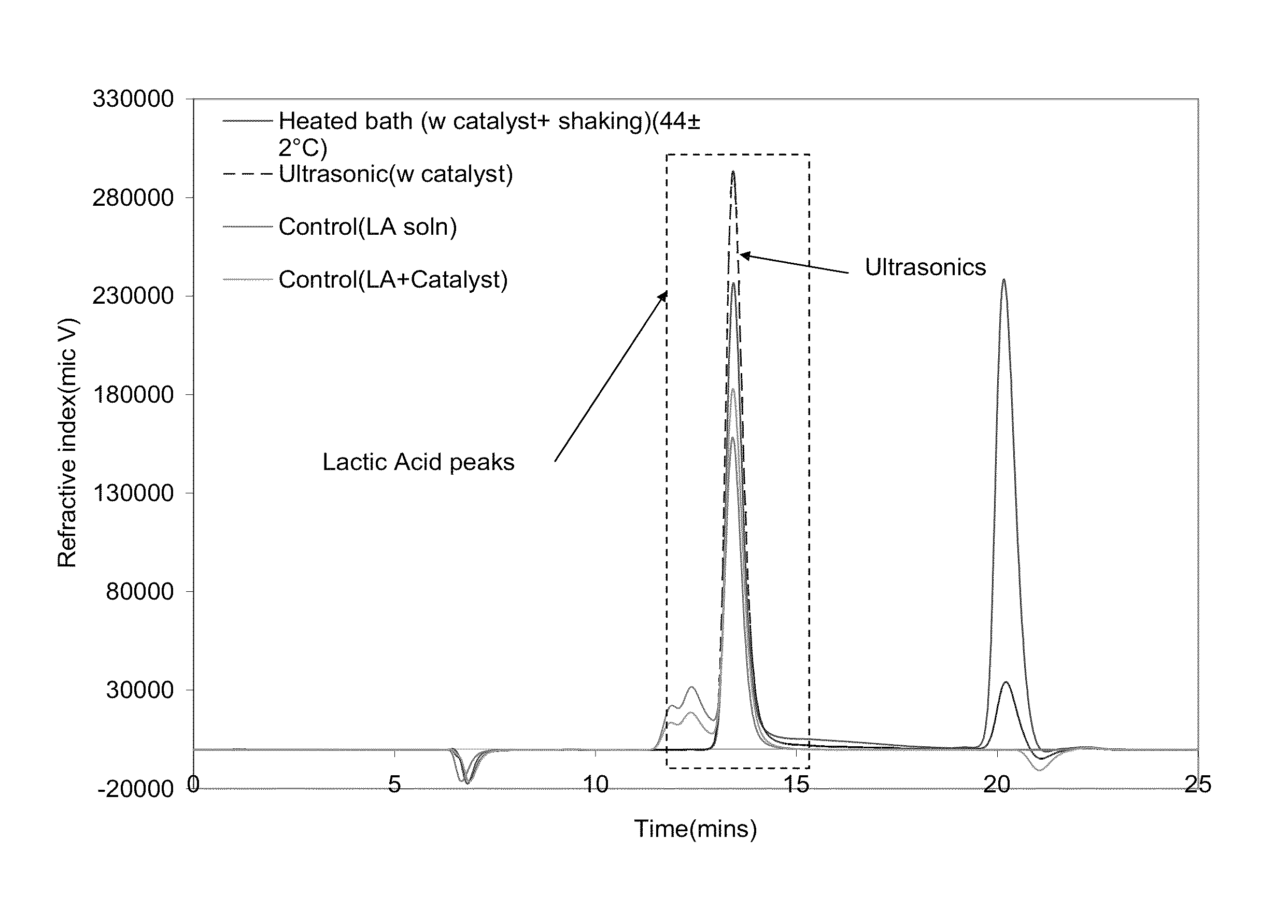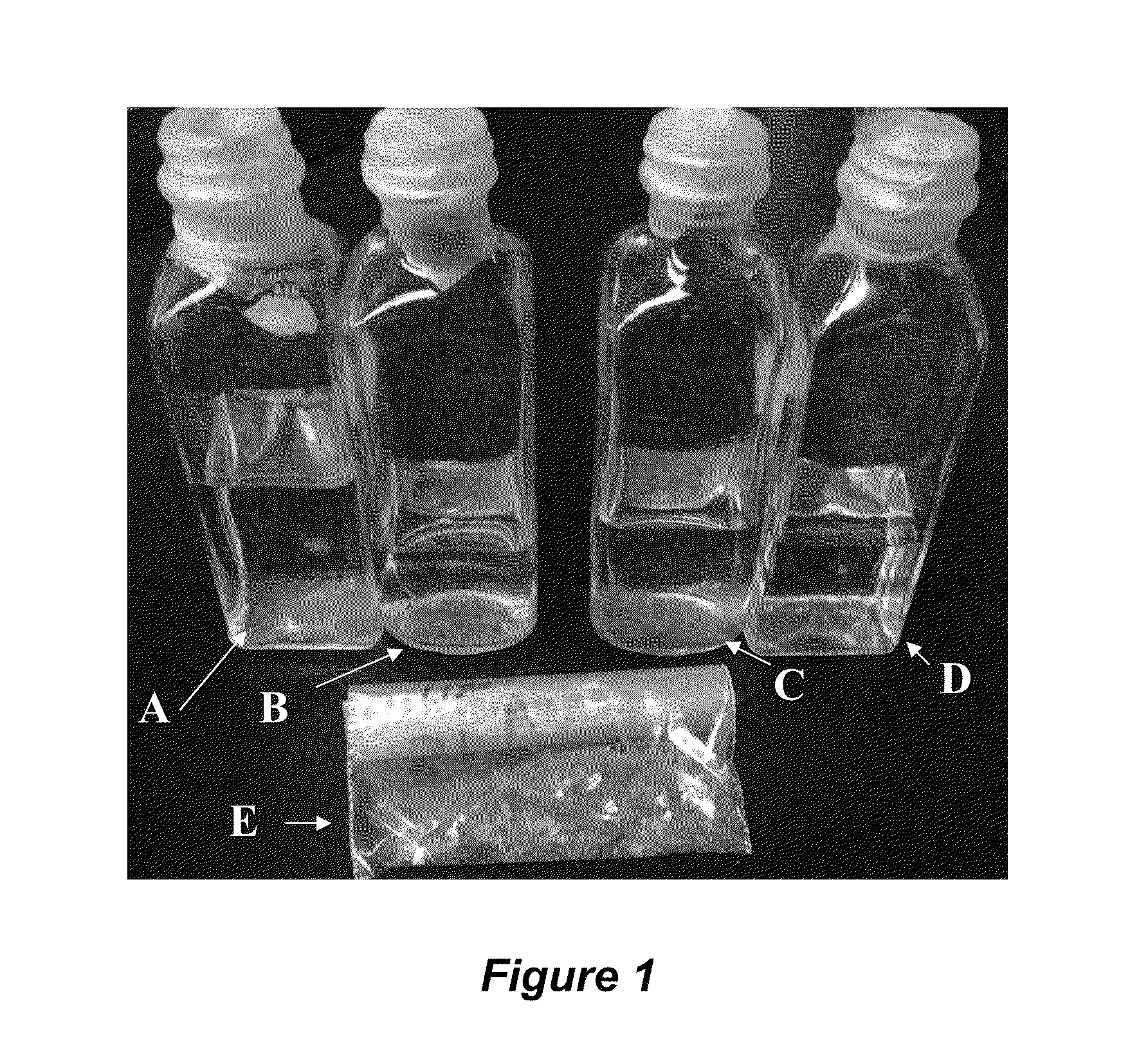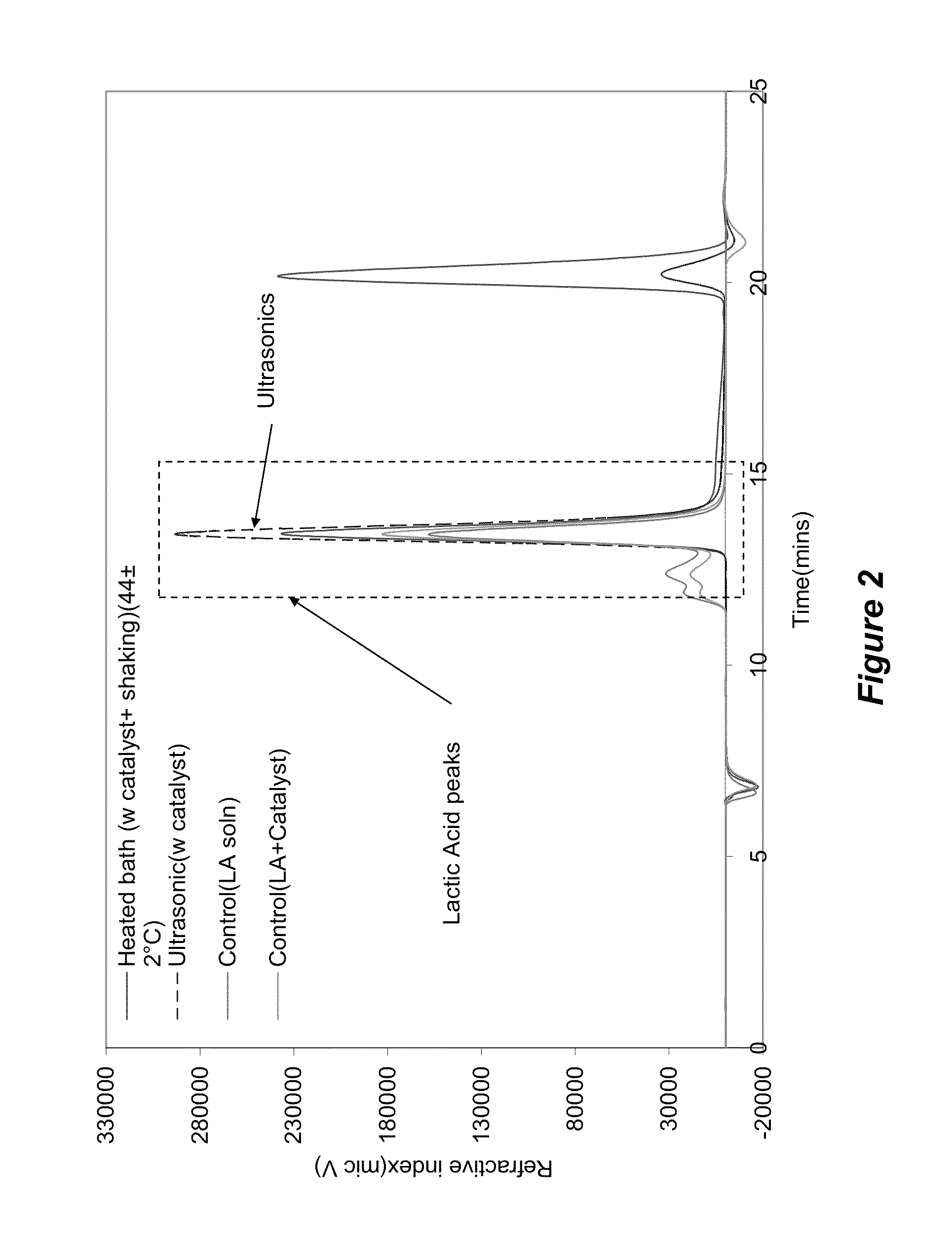Depolymerization of polylactic acid
a polylactic acid and depolymerization technology, applied in the preparation of carboxylic acid esters/lactones, organic chemistry, carboxylic compound preparations, etc., can solve the problems of complex structure, large mechanical properties of pla, and the depolymerization method of polylactic acid typically requires long cycle times, so as to reduce greenhouse gas emissions, reduce energy requirements, and depolymerize remarkably fast
- Summary
- Abstract
- Description
- Claims
- Application Information
AI Technical Summary
Benefits of technology
Problems solved by technology
Method used
Image
Examples
example 1
Depolymerization of PLA
[0075]Samples were sourced from a PLA water bottle manufacture (Naturally Iowa, LLC). The walls of the bottle were cut into strips of standard width (˜6 mm) using an office paper shredder. These strips were then chopped into 6×2 mm samples utilizing a Scheer Bay BT-25 strand pelletizer (Bay Plastics Machinery, MI). A Branson 2000ea series 20 KHz ultrasonic system (2200 W) was used when samples were treated with ultrasonics. The ultrasonic treatment medias were water, methanol, and ethanol along with various salts and metal bases as follows: potassium carbonate (K2CO3), sodium hydroxide (NaOH) (Fischer Scientific, Pittsburg, Pa.); aluminum carbonate (Al2(CO3)3) (Alfa Aesar, MA); zinc carbonate basic [ZnCO3]2[Zn(OH)2]3; magnesium oxide (MgO); and zirconium(IV)oxide (ZrO2).
[0076]Various salts and metal bases were screened and the successful salts were analyzed for further investigation. The total solids and chemical concentrations were varied over a wide range of...
example 2
Recycling of Lactic Acid from Postconsumer PLA Products
[0090]A first phase of trials for recycling lactic acid from postconsumer PLA products involved an array of screening experiments. Based on the outcome of these trials, further confirming tests were designed and conducted. These outcomes were compared to identify the design space for process optimization of the operating parameters. The various experimental materials, methods, and testing equipment used in the research are detailed below.
[0091]1.1 Materials.
[0092]1.1.1 Raw Material and Preparation: Post Consumer Poly Lactic Acid Polymer.
[0093]The raw PLA material for this work was sourced from Totally Green Inc., IA, previously known as “Naturally Iowa”. The source was postconsumer PLA water bottles from the company's packaged water product brand “Green Bottle Spring Water”. It should be noted that the bottles were made with the Ingeo™ PLA resin, which is manufactured by NatureWorks LLC (Blair, Nebr.). The PLA bottles were washe...
PUM
| Property | Measurement | Unit |
|---|---|---|
| temperature | aaaaa | aaaaa |
| temperature | aaaaa | aaaaa |
| temperature | aaaaa | aaaaa |
Abstract
Description
Claims
Application Information
 Login to View More
Login to View More - R&D
- Intellectual Property
- Life Sciences
- Materials
- Tech Scout
- Unparalleled Data Quality
- Higher Quality Content
- 60% Fewer Hallucinations
Browse by: Latest US Patents, China's latest patents, Technical Efficacy Thesaurus, Application Domain, Technology Topic, Popular Technical Reports.
© 2025 PatSnap. All rights reserved.Legal|Privacy policy|Modern Slavery Act Transparency Statement|Sitemap|About US| Contact US: help@patsnap.com



